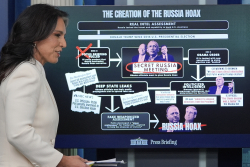The next-gen fighter platform is to replace France’s Rafales, Germany’s Typhoons, and Spain’s EF-18 Hornets down the line.
While the US Air Force’s upcoming Next-Generation Air Dominance (NGAD) fighter program continues to make progress in terms of design and development, other nations are similarly striving to field their own sixth-gen counterparts. France, Germany, and Spain are jointly working to introduce the Future Combat Air System (FCAS) family of systems. Like the US NGAD program, the European sixth-gen series will feature both manned and unmanned components. The collaborative fighter is expected to enter service officially around 2040, although some hiccups appear to be disrupting the flow of the future next-gen platform.
Recently, French manufacturer Dassault Aviation has expressed wanting a larger role in the FCAS design process. Reportedly, the ongoing work share between the French plane maker and Germany’s Airbus has not been completely smooth, as both want a primary say in FCAS. According to German defense minister Boris Pistorius, bickering between some of the partner companies surrounding FCAS should be rectified. Pistorius noted, “What’s important for the two of us is that the projects represent German-French cooperation and partnership, they don’t represent national egotism.”
An Overview of FCAS
The collaborative European fighter program was formerly launched back in 2017 by French president Emmanuel Macron and former German chancellor Angela Merkel. However, FCAS’s conceptualization dates back much further. Germany, France, the UK, Italy, Spain, and Sweden opted to move forward with a collaborative fighter series in 2001. France, Germany, and Spain officially joined the program by 2019. The objective of fielding a next-gen fighter platform is to replace France’s Rafales, Germany’s Typhoons, and Spain’s EF-18 Hornets down the line. As detailed by Simple Flying, this new system is envisioned as a “decentralized, cyber-resilient, collaborative information network across air, land, sea, space, and cyber domains that will enable real-time intelligence and exchanges across all domains.”
According to Airbus, which represents both Germany and Spain’s contributions, the joint fighter will center around a Next Generation Weapon System (NGWS). Like the US Air Force’s NGAD program, NGWS will function as a “family of systems” incorporating both manned fighters and unmanned remote carriers. A combat cloud will connect these systems in the air, on the ground, and in space. “The concept based on the air cloud is that all elements must constantly interoperate with each other to form a cohesive system that is informed as one and combat as one,” explained program manager of FCAS Combat Cloud Mark Paskowski.
As mentioned earlier, the US Air Force’s own next-generation program is expected to field similar capabilities. From the slew of Collaborative Combat Aircraft that will fly alongside sixth-generation fighter jets serving as “loyal wingmen drones,” to NGAD’s next-generation stealth, sensor fusion, and long-range functions, this futuristic family of systems will be hard to beat in terms of air superiority. In addition to the European FCAS endeavor, Moscow and Beijing are reportedly working to develop their own sixth-generation fighter counterparts.
On paper, FCAS will certainly represent a highly advanced platform when introduced. However, roadblocks impacting the collaborative effort could hinder the program’s timely introduction to service.
About the author: Maya Carlin
Maya Carlin, National Security Writer with The National Interest, is an analyst with the Center for Security Policy and a former Anna Sobol Levy Fellow at IDC Herzliya in Israel. She has bylines in many publications, including The National Interest, The Jerusalem Post, and The Times of Israel. You can follow her on Twitter: @MayaCarlin.
Image: VanderWolf Images / Shutterstock.com
















